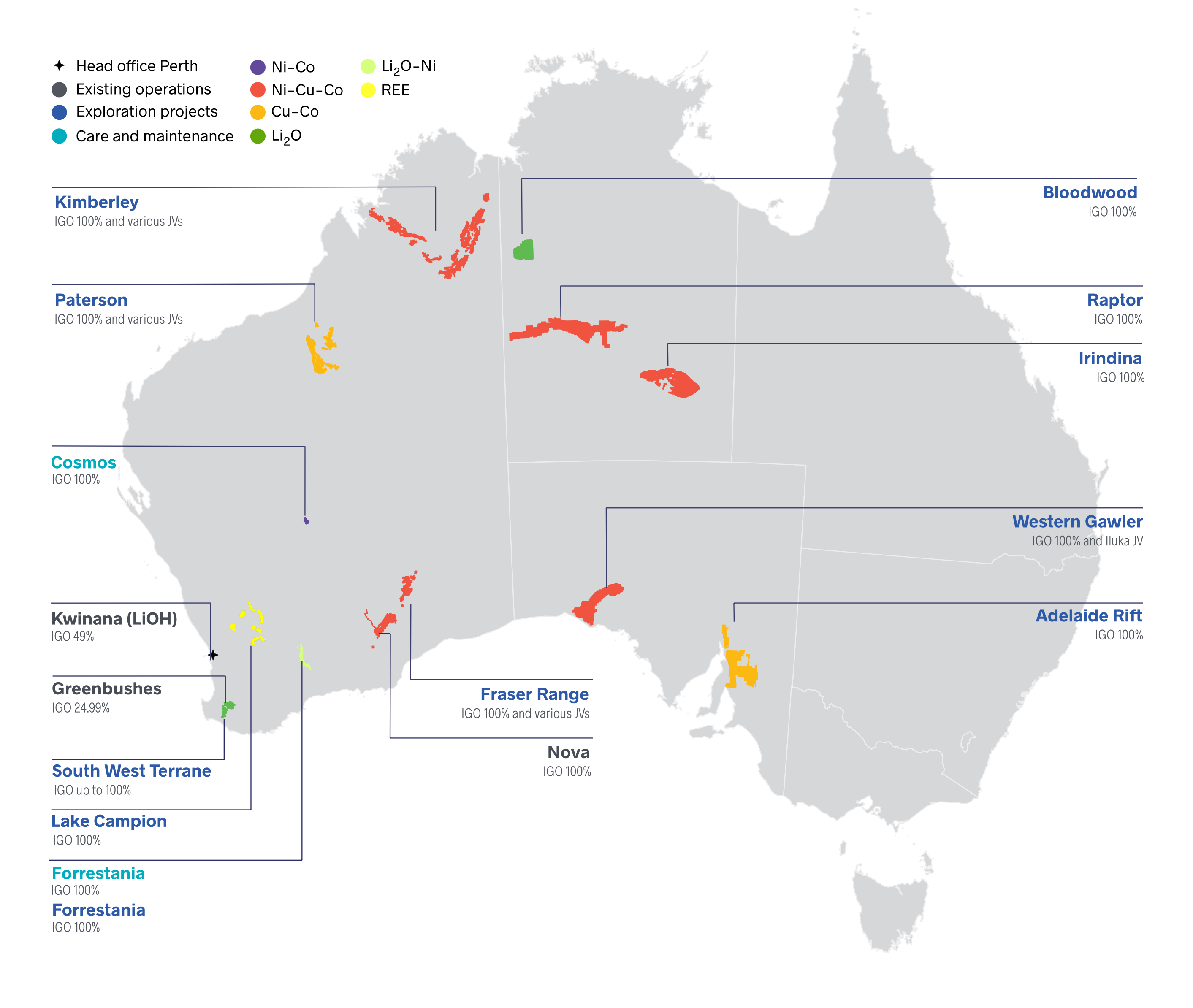IGO remains committed to unlocking value through exploration and discovery.
We understand that without an enduring commitment to exploration, our industry will be unable to satisfy global demand for the metals which are critical to clean energy and the ongoing decarbonisation of our planet.
IGO's exploration strategy is aligned to our broader corporate strategy focused on metals critical to clean energy, with our portfolio, targeting nickel, copper and lithium.
Our strategy relies on leveraging the latest technology and innovation, our inhouse geology, geophysics and geochemistry knowledge, our proprietary inhouse databases, and targeted research collaborations.
Our work in this area would not be possible without the support of the many Traditional Owner groups and local communities on whose land we operate. IGO's approach to engagement is guided by our values and the utmost respect we have for the communities which we collaborate with around Australia.
Importantly, our teams will not commence work on any project without appropriate agreements in place and a clear plan for engagement with these stakeholder groups as work progresses.
Read IGO's Exploration Report Update FY24.














